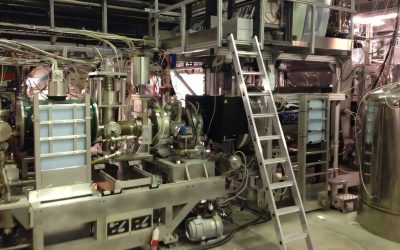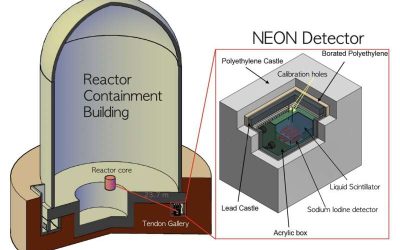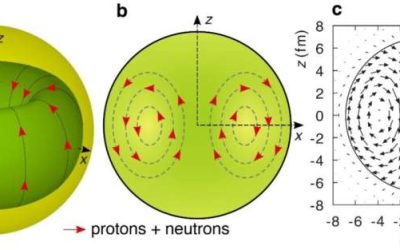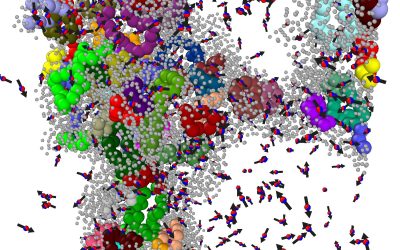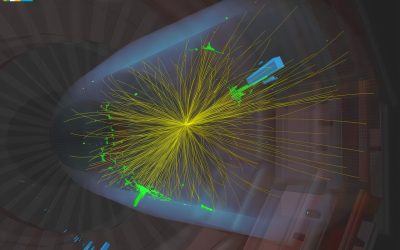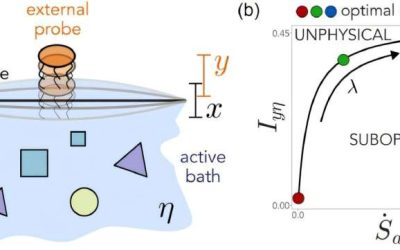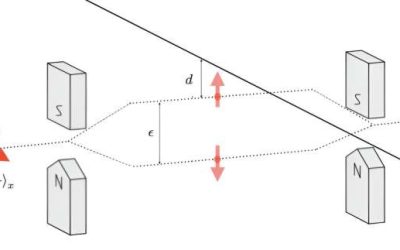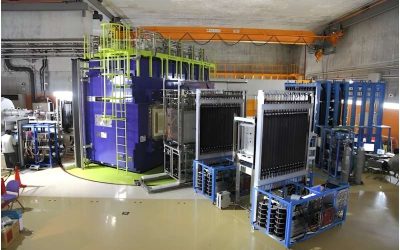Antimatter is a fascinating kind of matter made up of antiparticles, which have a mass equivalent to that of their normal matter counterparts, yet they exhibit an opposite charge and distinct quantum properties.
General Physics
NEON experiment shares results from first direct search for light dark matter
Detecting dark matter, the elusive type of matter predicted to account for most of the universe's mass, has so far proved to be very challenging. While physicists have not yet been able to determine what exactly this matter consists of, various large-scale experiments...
Nickel-58 nucleus may host elusive toroidal dipole excitations
Dipole toroidal modes are a unique set of excitations that are predicted to occur in various physical systems, ranging from atomic nuclei to metamaterials. What characterizes these excitations, or modes, is a toroidal distribution of currents, which results in the...
Active particles reorganize 3D gels into denser porous structures, study shows
Colloidal gels are complex systems made up of microscopic particles dispersed in a liquid, ultimately producing a semi-solid network. These materials have unique and advantageous properties that can be tuned using external forces, which have been the focus of various...
The first search for soft unclustered energy patterns in proton–proton collisions at 13TeV
A key objective of many physics studies is to experimentally observe exotic phenomena beyond the Standard Model (SM) that are predicted by theoretical models. These include hidden valley models, which predict the existence of a dark sector in which particles and...
Theoretical framework could improve data gathering in biological systems
To effectively adapt to change, living organisms rely on their ability to rapidly detect and process sensory information in their surroundings. The sensory information available at a given time continuously changes, which means that it can typically only be observed...
Study gathers strong evidence of the doubly magic nature of ¹⁰⁰Sn
Recent experiments at CERN have shed new light on the nuclear properties of atomic nuclei (i.e., the central regions of atoms accounting for most of their mass). A key objective of recent research into atomic nuclei has been to better understand the properties of...
Detecting Planck-scale dark matter by leveraging quantum interference
While various studies have hinted at the existence of dark matter, its nature, composition and underlying physics remain poorly understood.
Findings hint at a superfluid phase in ²⁹F and ²⁸O
Data collected by the SAMURAI spectrometer at RIKEN's RI Beam Factory (RIBF) in Japan recently led to the detection of a rare fluorine (F) isotope, known as 30F. This has opened interesting possibilities for the study of rare nuclear structures and corresponding...
New Sisyphus cooling technique could enhance precision of atomic clocks
Researchers in the Neutral Atom Optical Clocks Group at the National Institute of Standards and Technology (NIST), University of Colorado and Pennsylvania State University recently devised a new sub-recoil Sisyphus cooling technique that could help to improve the...

